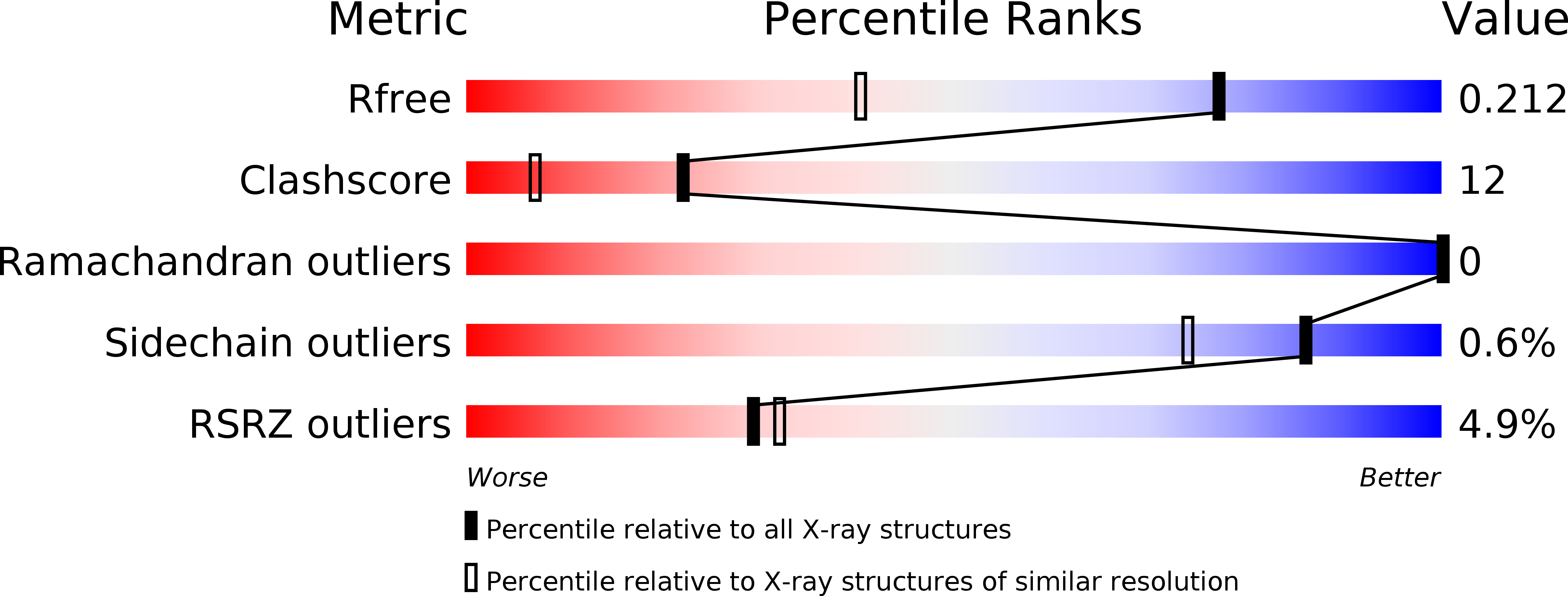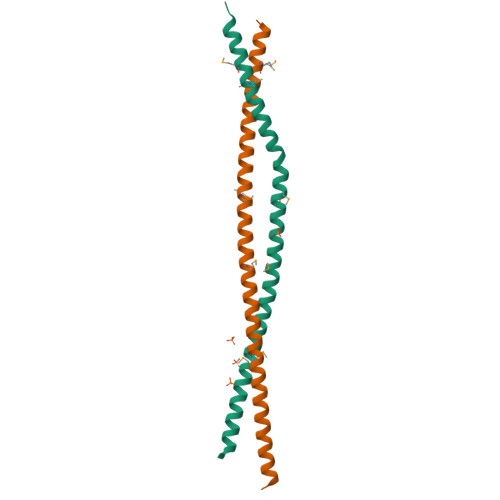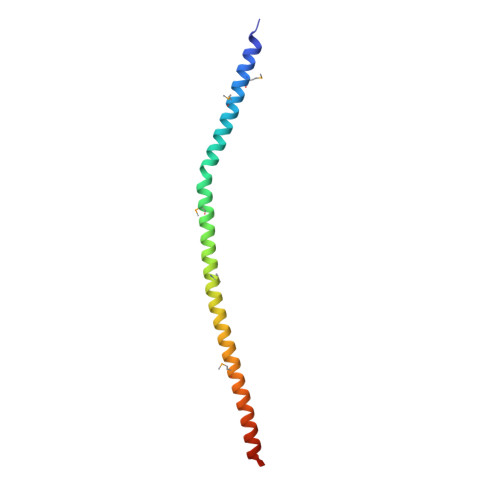Structural basis for cargo binding and autoinhibition of Bicaudal-D1 by a parallel coiled-coil with homotypic registry
Terawaki, S.I., Yoshikane, A., Higuchi, Y., Wakamatsu, K.(2015) Biochem Biophys Res Commun 460: 451-456
- PubMed: 25796327
- DOI: https://doi.org/10.1016/j.bbrc.2015.03.054
- Primary Citation of Related Structures:
4YTD - PubMed Abstract:
Bicaudal-D1 (BICD1) is an α-helical coiled-coil protein mediating the attachment of specific cargo to cytoplasmic dynein. It plays an essential role in minus end-directed intracellular transport along microtubules. The third C-terminal coiled-coil region of BICD1 (BICD1 CC3) has an important role in cargo sorting, including intracellular vesicles associating with the small GTPase Rab6 and the nuclear pore complex Ran binding protein 2 (RanBP2), and inhibiting the association with cytoplasmic dynein by binding to the first N-terminal coiled-coil region (CC1). The crystal structure of BICD1 CC3 revealed a parallel homodimeric coiled-coil with asymmetry and complementary knobs-into-holes interactions, differing from Drosophila BicD CC3. Furthermore, our binding study indicated that BICD1 CC3 possesses a binding surface for two distinct cargos, Rab6 and RanBP2, and that the CC1-binding site overlaps with the Rab6-binding site. These findings suggest a molecular basis for cargo recognition and autoinhibition of BICD proteins during dynein-dependent intracellular retrograde transport.
Organizational Affiliation:
Graduate School of Science and Technology, Gunma University, 1-5-1 Tenjin-cho, Kiryu, Gunma 376-8515, Japan; SPring-8 Center, RIKEN, 1-1-1 Koto, Sayo-cho, Sayo-gun, Hyogo 679-5148, Japan. Electronic address: terawaki@gunma-u.ac.jp.




















